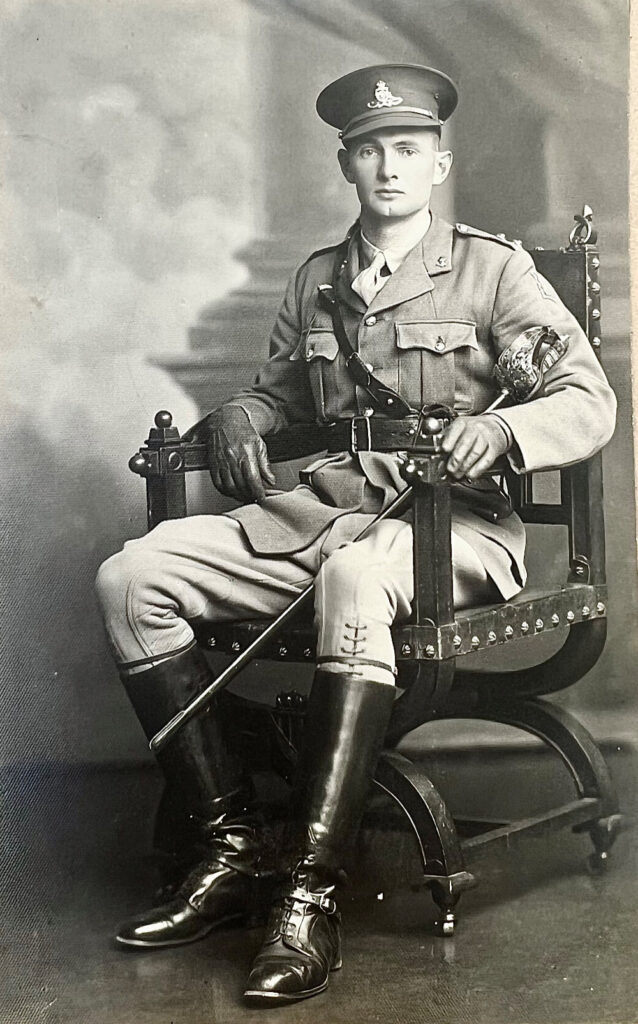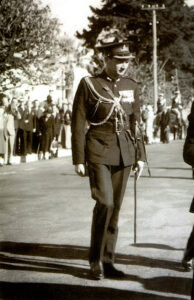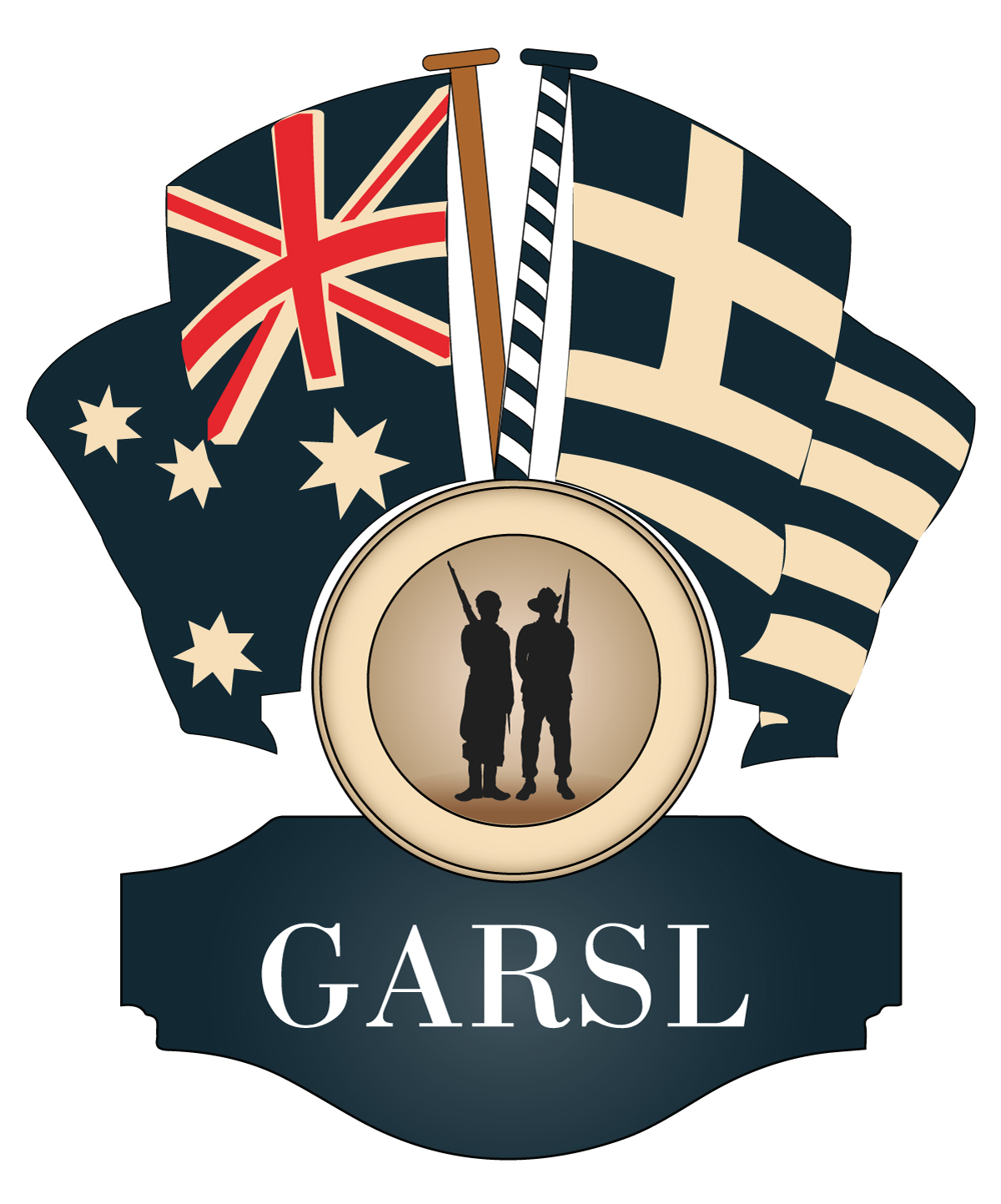The Story of Major Ian Bessell-Browne MBE
 Ian Joseph Bessell-Browne was born into a military family in South Perth on 30 October 1910. His father Brigadier-General AJ Bessell-Browne served in the artillery in the Boer War, at Gallipoli and on the Western Front in WW1.
Ian Joseph Bessell-Browne was born into a military family in South Perth on 30 October 1910. His father Brigadier-General AJ Bessell-Browne served in the artillery in the Boer War, at Gallipoli and on the Western Front in WW1.
Ian enlisted on 23 October 1939 with the rank of Major and enlistment number WX8 as Battery Commander of B Battery (later 6th battery), 2/3rd Field Artillery Regiment, 2/AIF.
He embarked for the UK on the Empress of Canada in May 1940. The ship was diverted round South Africa when Italy declared war on the Allies, arrived in Grenoch Scotland and the troops were eventually transported to England. From there they travelled to the Middle East arriving in January 1941 and subsequently arrived in Greece in June of that year.
Ian served in Greece and Crete and was taken prisoner-of-war in Rethymno in May 1941. He was held in three different POW Camps in Germany – Lubeck, Warburg and Rotenburg an der Fulda.
He was mentioned in despatches and awarded an MBE, the latter for his role on the escape committee in Rotenburg an der Fulda.
Ian requested discharge in October 1945 and transitioned to the Citizen Military Forces in 1951. He was appointed to command the 24th Heavy Anti-Aircraft Regiment RAA (CMF). He also continued to serve as Aide de Camp to the Governors of Western Australia – Sir James Mitchell and Sir Charles Gairdner, a voluntary position he had also held pre-WW2.
Ian had a business as a manufacturers’ representative and was father to three children. He and his second wife Norma visited Crete twice and were enamoured of the friendly Cretan people, culture and landscape. Their daughter Susan travelled with them on one occasion and has since returned two more times. On her third visit, together with her brother Guy, a close relationship with the Military Museum of Rethymno was formalised through exchange of plaques, gifts and memorabilia for display in the museum. The family has facilitated a relationship between the Royal Australian Artillery Historical Society of WA and the Museum.
Ian died in 2004 at the age of 93.
The following are:
- Excerpts from Ian Bessell-Browne’s “Recollections of a POW” which are reproduced in full in a book Susan has written entitled “To Crete and back. A collection of stories about the close Australia/Crete bond.”
- Quotations from “The Thunder of the Guns” A History of 2/3 Australian
Field Regiment by Les Bishop.
Foreword
The surrender
From the German point of view
1 Excerpts From Recollections
Recollections of a P.O.W. W.X.8 Major I Bessell-Browne.
2/3 Field Regiment. 6 Division 2/ A.I.F
The following are excerpts from recollections which cover the capture in Crete and life as a POW in Germany. They were written by Ian Bessell-Browne in the late1980’s.

“1 Capture
It is standard practice to separate officers from their troops as soon as possible after capture. In my own case I also became separated from my fellow officers and the misery and depression of those first few days are still, fifty years later, only painfully recalled.
Surrender was not an option seriously considered until 24 hours before the end, but when asked by Lt. Col Ian Campbell, the force Commander, for my opinion, I had no hesitation in recommending it. Our men had fought splendidly with inadequate obsolete weapons. The use of the Landing Field had been denied to the enemy and except for a small pocket holding out in the village of Platanes, the German parachutists who landed upon us had been killed or captured. Our supplies & rations were exhausted. The battles at Melame and Heraklion had been lost and our forces there evacuated through Sfakia. We were thus exposed to the whole German invading army. Further defence of our Landing Field could achieve nothing more and the loss of further lives seemed quite pointless.
Nevertheless, surrender was a bitter pill to swallow and a humiliating end for us all. The Greece and Crete debacle was a shocking waste of one of the best equipped and trained Field Regiments in the Allied Forces.
2 Athens and Salonika
My first night was spent in a temporary cage in the tattered remains of a tented Allied Hospital on the beach in Canea (Chania). From there another barbed wire enclosure inland, and on the third day I was flown to Athens in a J.U.52 one of the ‘planes so recently used in the parachute drops. They were the work horses of the German Army, filling a similar role to the Allies DC3s. We flew all the way very low and I remember hoping for the first time, to see no sign of the R.A.F!
From Athens to Salonika by train with a mixed lot of POW’s. This journey included an exhausting route march over the mountains to pick up another train on the other side of the blown railway tunnel. We marched all night and on until mid-day. I was told one off the guards collapsed and died. (They were elderly rear area personnel).
The camp at Salonika was in an old Turkish barracks. The conditions were appalling and bug-ridden – not the listening devices, the real blood-sucking insects which could be seen at first light each morning retreating in columns to their daytime lairs. One saving feature was a very old stone bath house which helped in the fight against lice – another insect with which we became acquainted.
Our beds were two-tiered iron frame with chain wire mattress and one blanket. I recall an indignant Lt John Learmonth telling me that a Padre in the bed above him was picking lice from his garments and dropping them through the wire!
One night we heard shouting and bursts of automatic fire. In the morning two bodies were hanging in the wire. They were left there all day. A ghastly Nazi ploy to discourage further attempts to escape.
Our next move was by train all the way from Salonika to Lubeck on the Baltic. This journey right through Europe took eight days.
We were packed into cattle trucks and issued with a week’s rations to be shared by small groups. The only windows were small rectangular cut-outs well above eye level and covered with barbed wire so one saw nothing of the countries through which we travelled. It was a horror journey, especially for me as I had developed dysentery and the few periodic comfort stops were too infrequent for my needs. ‘Einsteigen’ and ‘aussteigen’ were the first German words we learnt.
Arriving at Lubeck too weak to march I was admitted to the Camp Hospital where I received good medical attention in the luxury of a real bed. Within a week I had recovered and was discharged. Most of the others in the hospital were suffering from jaundice and the Germans were very worried about a possible epidemic. There were visits by a number of senior medicos and his no doubt explained the careful attention.
OFLAG X C LUBECK
This was a special POW Camp for all officers captured on Crete. It was established as ‘pay-back’ treatment for alleged atrocities against their paratroops. If there were any atrocities, they were certainly not committed by Australian Forces.
It is possible that some of the Cretans used unorthodox weapons such as axes in despatching the odd para suspended by their harness from trees. They certainly looked fierce enough. Heavily bearded and dressed in odd looking baggy trousers, knee high boots and crossed bandoliers.
So we were isolated for three months’ special treatment:
1. no contact with the Protecting Power
2. No contact with the International Red Cross
3. No mail privileges
4. Reduced rations – the calories were on the starvation side of minimal.
So we slowly starved and became obsessed about food.
The guard house was a wooden structure immediately adjacent to our perimeter fence but the fire-fighting equipment was within our compound. The weakness of this arrangement became apparent when the guard house was hit by incendiaries during an R.A.F. attack on Lubeck. It became a real keystone comedy as POW officers raced in and out of buildings, falling over each other in pretence of assisting while ensuring that the guard house was completely gutted.
At the end of the three months we entrained for Warburg.
Note: The subsequent two chapters of Ian Bessell-Browne’s recollections have been edited out for publication on the Battle of Crete Memorial website as they refer to the experience of two further Prisoner of War Camps in Germany, not specifically to the Battle of Crete. The following are the concluding chapters.
FINAL DAYS
As the allied forces crossed the Rhine and swept into Germany we were marched away towards the south to become part of a wall of Prisoners around Hitler’s redoubt at Berchtesgaden. Fortunately, General Patten’s armour broke through ahead of us and we wheeled east.
At the beginning our guards were officious but gradually as they realised the end was near they became more amenable so that we moved at our own pace and eventually decided all moves ourselves. It was decided we should remain as a body and await overtaking by the Americans.
This eventually happened on Friday 13th April.
Very quickly we lined up in groups of 20 on an airfield where DC3’s landed with jerry cans of fuel. These were unloaded and then we climbed aboard for a flight to Brussels, where American service women plied us with doughnuts and then we suffered the indignity of medical orderlies squirting DDT dust down our shirts and trousers. The next day I flew to England in the front gunner’s bubble of an RAF bomber. Oh to be in England now that April’s there!
POST SCRIPTS
1) At Guildford Grammar School in 1924 a friend named Wallace Kyle won a RAF Scholarship and at age 14 left for England.
In 1943 at Oflag 1X A/Z Rotenburg an der Fulda a flight of Mosquito Bombers flew down our valley at window height in close formation. It was a stirring and cheering sight. We had seen and heard many aircraft – specks in the distance, but never anything like this. There was much cheering and shouting – enough to attract a few warning shots from the guards.
In 1972 my wife and I spent a week-end with my old friend at his home at Tiptoe in Hampshire. He was now Air Marshal Sir Wallace Kyle, retired, having finished his Service as Commander in Chief of the RAF.
After dinner, war stories came up and I told him of the Rotenburg sighting. He said wait a minute Ian and produced a tape recording of his radio interchange with his pilots during the flight. He had led the raid on the Zeiss factory at Jena, ground hopping all the way to avoid radar and ack ack.
2)After an escape we were kept in the basement until 3am while a German officer called the roll to try to identify the missing man. He got little co-operation and his attempt to pronounce Capt. Llewellyn was hilarious.
THOUGHTS IN CONCLUSION
Looking back at those years behind the wire, I certainly do not see them as four years lost or even wasted. Rather as the university education I never had. We were lucky to have access to a comprehensive library and I read widely. Subjects which would never otherwise have come to my attention. It has stood me in good stead in the years that followed. So, now reasonably fit as I approach my 80th Birthday, I feel very lucky indeed.”
2 Quotations from “The Thunder of the Guns” A History of 2/3 Australian Field Regiment by Les Bishop.
Foreword
“After reading Len Deighton’s ‘Blood Tears and Folly’, shattering many illusions accumulated over a long life-time, it was refreshing to turn to ‘The Thunder of the Guns!’. This history of 2/3rd Field Regiment tells of gallant young men who, like their fathers before them, went off to war confident in the justice of their cause and with no thought of the decisions made in high places, which were to mark their destiny.
As it happened, there is a remarkable resemblance in the Greek-Crete debacle and the Gallipoli campaign of World War 1.
Consider:
Both a brainchild of Winston Churchill
Both fought in adjacent Mediterranean countries
Both extremely hazardous in concept
Both suffered severe casualties
Both ended in evacuation
Both recovered and fought on to final victory.
The 2/3rd Field Regiment was a unit of the 6th Australian Division, the first volunteers and among our best fighting units in World War II.
Their history appears late in the day, but survivors consider they are entitled to a written record and I agree with them. We are all very fortunate that the task was undertaken by one of our own. The author, Les Bishop, has beavered away for years collating and checking all details to ensure authenticity.
Those who read the book will better understand the meaning of Anzac Day and why these old gunners still meet together from time to time in comradeship.
signed
Ian Bessell-Browne”
The surrender (excerpt from “The Thunder of the Guns”)
“Some years later, Captain Mott, Battery Captain 6 Battery was to pen these thoughts on the day of surrender:
‘I recall the march down to the road at the end. Out front was that grand man, Lieutenant-Colonel I R Campbell and with him, carrying a white flag, the commanding officer’s quartermaster. Our Battery Commander, Major Ian Bessell-Browne and I came next and behind us the troops – our troops, the Gunners……Every gunner was in step, every man erect, every man looking his own height and straight to the front. Not a word was spoken, not an eye twitched. Never, I felt, would 6 Battery be defeated. And never, I knew, would 6 Battery be humiliated.”
From the German point of view (excerpt from “The Thunder of the Guns”):
“When General Kurt Student reported to Hitler that the island had been conquered, the Dictator replied, ‘Yes, but at what price?’ In the ten days of the land campaign the German Army lost more dead than the total of all German campaigns since 1937. It was not only numbers, the Parachute Army was the elite of the Wehrmacht.”

